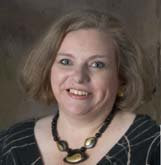Safe Kids USA Reminds Parents to Store Hazardous Goods Safely
Safe Kids USA
Poison control centers in the United States receive 1.2 million calls each year as a result of accidental poisoning of children ages 5 and under. Each year, about 68,000 kids in that age group are treated in emergency rooms for poisoning, and more than 50 die. Nearly 90 percent of these toxic exposures occur in the home, and 60 percent involve non-pharmaceutical products such as cosmetics, cleansers, personal care products, plants, pesticides, art supplies, alcohol and toys.
March 16-22 is National Poison Prevention Week, an annual program established by Congress in 1961 to spread the message that children act fast...so do poisons! “It doesn't take much to make a small child sick,” says Chrissy Cianflone, director of program operations at Safe Kids Worldwide. “Kids have faster metabolisms than adults and anything they ingest will be absorbed into the bloodstream very quickly.”
Child-resistant packaging is credited with saving hundreds of children's lives since its introduction in the 1970s, and childhood lead poisoning declined by 80 percent in the 15 years after unleaded gasoline and paint became industry standards. Still, there is no substitute for active supervision and childproofing. “If a product label says ‘keep out of reach of children,' there's a reason,” says Cianflone. “Keep it up high and in a locked cabinet.”
Safe Kids Worldwide reminds parents to keep the poison control hotline number handy. “Memorize this toll-free number: 800-222-1222 ,” Cianflone says. “Keep it near every phone in your home and program it into your cell phone.” From anywhere in the United States , this number connects to the local poison control center.
“Call 911, not poison control , if a child is choking, having trouble breathing or having a seizure,” says Cianflone. “Follow the 911 operator's instructions. Do not induce vomiting or give the child any fluid or medication unless directed.”
Safe Kids Worldwide offers these additional tips:
~Get your home tested for lead. Kids inhale the dust of lead-based paint and can build up enough lead in their blood to affect intelligence, growth and development. In 2002, there were 310,000 children ages 6 and under with elevated blood lead levels . Lead-based paint was used in homes until 1978, so it's important to have older homes tested.
~Install a carbon monoxide detector in every sleeping area. Carbon monoxide is an invisible, odorless gas that builds up around fuel-burning appliances — and cars in garages — and is present in tobacco smoke. It can make a child seriously ill in concentrations that would barely affect an adult.
~Stay alert while using cleaning products or other potentially harmful substances. A child can be poisoned in a matter of seconds. Never leave kids alone with an open container of something you wouldn't want them to ingest.
~Don't refer to medicine or vitamins as candy. Children should not think of therapeutic substances as treats. And when you are administering medicine to your children, follow dosage directions carefully.
~Store medications and any potentially harmful products in their original containers with their original labeling, out of reach of children.
~Learn which plants are poisonous. Keep poisonous houseplants out of reach, and teach children not to put any part of an outdoor plant in their mouths without adult supervision.
~Discuss these precautions with grandparents and relatives. Grandparents may have medications that can be very dangerous to children, and their homes might not be as well childproofed as yours.
~Learn CPR. In less than three hours, you can learn effective interventions that can give a fighting chance to a child whose breathing and heartbeat have stopped

No comments:
Post a Comment